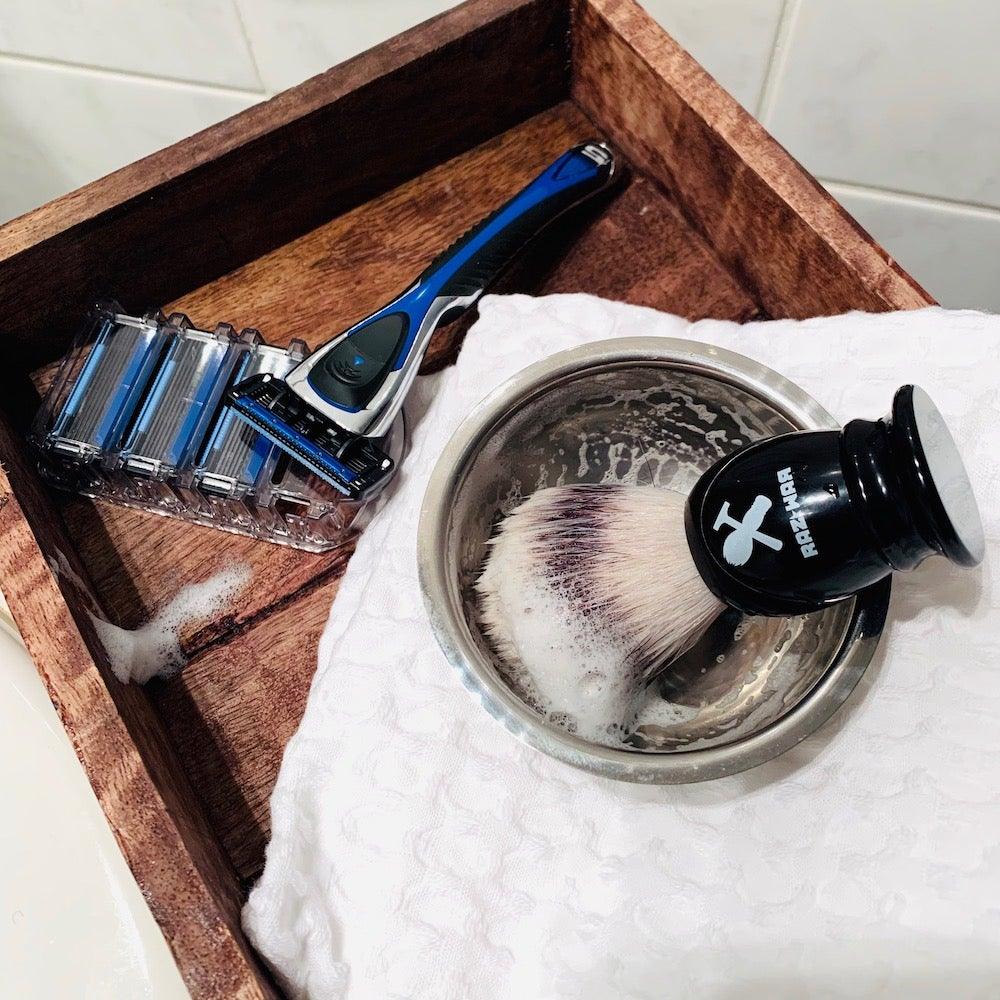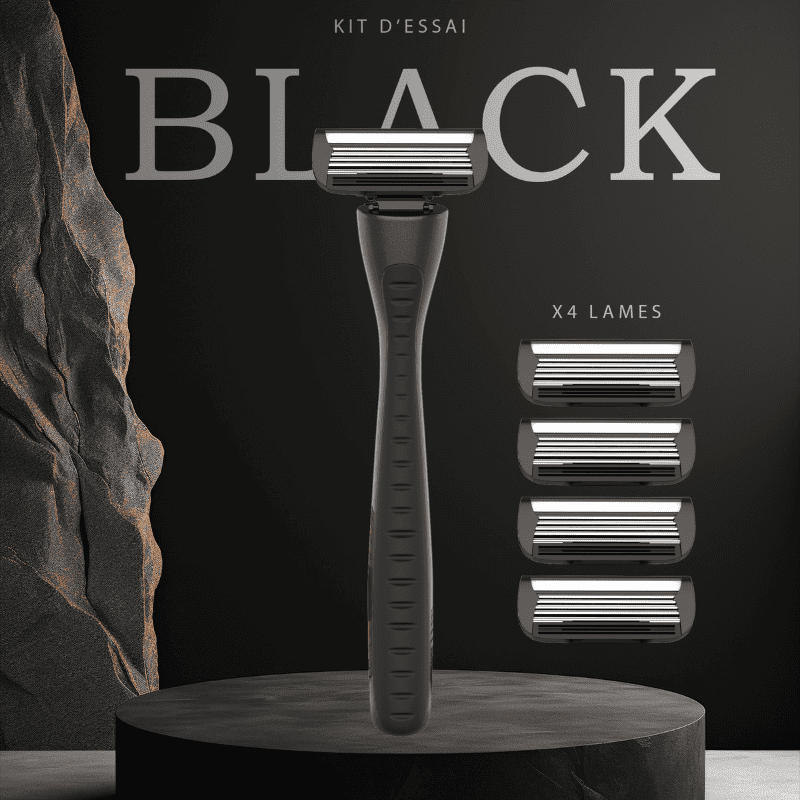The shaving brush (or shaving brush) is an essential element of so-called "traditional" shaving (wetshaving in English). There are all sizes, and all types of material. The handle can be made of wood, resin, metal, there is something for everyone. The hair can come from real badgers (from the back of the animal, from its neck, or from its belly), wild boars, bears, horses, but it can also be synthetic. At Raz * War, we made the choice to only offer badgers with synthetic hairs. They are less expensive, hypoallergenic, easier to maintain, and technology has made it possible to manufacture them of excellent quality.
This shaving tool has many advantages. The friction of the hairs against the skin allows to eliminate dead skin, to clean the origin of the hair, to exfoliate your skin well, which helps to avoid ingrown hairs. The harder the hairs, the more they will exfoliate the skin. Our Black Fiber badger fits this description perfectly. Our Silvertip badger meanwhile shows much softer hair. Traditionally, the hair from the neck of the animal (those "white-headed" hairs) was the noblest part that could adorn the badger. Our Silver Tip shaving brush reproduces the softness and exceptional quality of these bristles. In principle, the softer the bristles, the easier the soap suds will be created.
Choosing your shaving brush
Whether they have soft or hard bristles, all badgers are capable of creating a pleasant lather. The choice of badger depends mainly on individual taste. If you like to feel the bristles rub against your face, choose a brush with rather stiff bristles. If you prefer to feel a soft passage on your face, opt for a soft bristle brush.
For those with skin problems, such as acne prone, it is recommended to use a soft bristle brush. The harsh hairs could attack the skin and make the inflammation worse.
How to use your shaving brush
- Soak your badger in hot water for about 15 seconds to soften the bristles of the brush and get them to the right temperature. It also allows badgers with animal hair to soak up water. It cannot be said enough, water is the key ingredient to a successful shave. It softens the hair, while the shaving brush is used to straighten it, making it ready for the passage of the razor.
- Swirl the badger on the soap or the shaving cream of your choice (forget about the shaving foams from the supermarket!) until you get a nice creamy lather. If the foam is not as nice as expected, be sure to check the hardness of your tap water. Hard water makes it difficult to create foam.
- Use the shaving brush to apply the lather to all the areas you plan to shave, making linear movements (like painting a wall) finishing with a movement going against the grain to straighten them well.
- Often, an ideal shave requires 3 passes: across the grain, against the grain, and across the grain. Remember to apply foam, very wet, between each pass.
- At the end of the shaving, rinse the shaving brush well with lukewarm water to remove all the foam, and if it is very large, you can pat it dry with a towel. Let it dry head down on a badger holder. It is essential to let the water drip, especially if you are using a natural fiber shaving brush. Indeed, if the badger stays with its head up, the water will concentrate in the knot of the badger (the junction between the bristles and the handle); an overgrowth of bacteria can then occur.
Maintain your shaving brush
For badgers with a wooden handle, don't hesitate to use a little oil occasionally to nourish the wood. For handles made of other materials, you can wipe them with a micro-fiber cloth from time to time to remove any traces that the soap may leave there. Finally, you can shampoo your badger with lukewarm water every now and then, especially if you are using (pre-) shave oil!
One final tip, for those who usepre-shave oil. In such a case, it is imperative to choose a synthetic fiber brush, as the oil that absorbs on the hair damages the natural fibers, encouraging bacterial growth.


